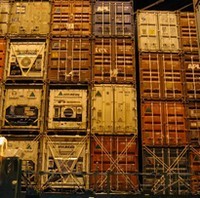More by accident than by design, 2013 is shaping up to be the most consequential year for U.S. trade policy since 2001, when China joined the World Trade Organization and the star-crossed Doha Round was launched. By the end of this year, negotiations could be completed on the first trans-Pacific free trade agreement in history, and talks should be well underway on a trans-Atlantic deal between the United States and the European Union. At the same time, new WTO negotiations will begin on a broad agreement to liberalize trade in service industries such as consulting, banking, insurance and architecture, and on expanding the 1996 Information Technology Agreement that eliminated tariffs on trade in computers, memory chips and other devices and helped trigger explosive growth in those industries. The Obama administration is also hoping to conclude bilateral investment treaties with the two largest emerging markets in the world, China and India, as well as adding China to the WTO agreement covering government purchases of goods and services.
Collectively, these agreements could produce the biggest negotiated liberalization of trade since the early 1990s, when the North American Free Trade Agreement and the Uruguay Round of world trade negotiations were completed. These new moves are not the result of any grand strategy by the United States or any other country, but instead are the flowering of initiatives that have either been under consideration or moving forward slowly for many years.
The Obama administration, for which trade liberalization has never been a top priority, is now ironically in the position to bring home this ambitious series of deals. It faces two big challenges. The first is not to let the perfect be the enemy of the good. For the past decade, U.S. ambitions for big trade deals, like the proposed Free Trade Area of the Americas, have faltered in the quest for “gold standard” agreements that would somehow resolve all the big issues, from intellectual property protection to agricultural subsidies, while minimizing domestic political opposition. The result was a decade in which U.S. trade deals, with the exception of South Korea, were concluded only with small countries willing to bow to most U.S. demands. The second challenge is to couple the ambitious negotiating agenda with an equally ambitious trade and investment promotion agenda. U.S. public support for trade has declined over the years not because Americans fail to recognize that trade can bring mutual gains to countries, but rather due to the perception that other countries have gained more. With unemployment still at painfully high levels and median wages stagnant, the administration needs to demonstrate that further trade opening will help more Americans in their pocketbooks.

